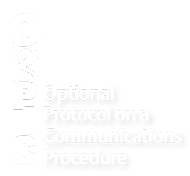FOLLOW-UP
Follow-up to the Committee’s Views and Recommendations
The Committee publishes a Follow up progress report on individual communications, which helps track State’s implementation of the Committee’s adopted Views. It is also possible to consult the Table of Views adopted by the Committee on the Rights of the Child and Follow-up status to know which States have provided a response to the Committee’s Views, and for which this is still pending.
It is vital that State parties to the OPIC fully implement the Committee’s Views and recommendations to ensure the realization of children’s rights. The OPIC provides for follow-up procedures, but it is important to advocate for the implementation of the OPIC through other means.
Follow-up procedures
According to the OPIC, after the Committee adopts Views on a communication or concludes an inquiry, the State has 6 months to respond in writing including by providing information on any action taken and envisaged in light of the Views and recommendations made by the Committee (article 11 and 14 of the OPIC).
With regards to the individual communication, the author will then be given two months to comment on the State party’s response.
Exchanges between the Committee, the State-party and/or the author of the communication can continue until the Committee considers the State has complied with its Views and recommendations.
The Committee can also ask States to provide further information on the measures taken or envisaged to take, in the State’s subsequent reports under article 44 of the Convention on the Rights of the Child (UNCRC), article 12 of the Optional Protocol to the Convention on the Rights of the Child on the Sale of Children, Child Prostitution and Child Pornography (OPSC) and article 8 of the Optional Protocol to the Convention on the Rights of the Child on Involvement of Children in Armed Conflict (OPAC), before the State is reviewed by the Committee. This will also be an important opportunity for the authors, national human rights institutions and civil society, to comment on the State’s report and it will be crucial to do so if the situation extends to children throughout the country.
Other means to advocate for OPIC implementation
National level
When the Committee concludes an inquiry or takes a decision on an individual communication (adopts Views) and makes recommendations to the State, these Views and recommendations are strong advocacy tools that can be used at the national level to ensure their implementation by the State. It will be particularly important to disseminate the Views and recommendations of the Committee with relevant actors and institutions, possibly also with the media. Civil society and national human rights institutions as well as Children Ombudspersons, among others, have a crucial role in supporting the State to guarantee child rights thanks to the implementation of the OPIC.
International level
At the international level, there are a series of options available to advocate for the implementation of the OPIC. The best course of action will depend on the particularities of the case as well as the capacity of the organization or the authors of the communication to take them forward.
During States review by the Committee
Usually every 5 years, the Committee reviews States implementation of the Convention on the Rights of the Child as well as its two first Optional Protocols (OPAC and OPSC). Hence, an important opportunity to follow-up on the Committee’s Views and recommendations is to send information to the Committee ahead of the review of the State concerned. When a State is reviewed, the Committee looks at the situation of children throughout the country. Thus, providing it with information on a problematic legislation or a situation affecting many children is very valuable for the Committee. The information has to be submitted in the form of a report called “alternative report” and can be submitted by any actor, including NGOs and children. For more information, please consult: http://crcreporting.childrightsconnect.org/
It can also be helpful to look at the last State report of the Committee, to see if it has already drawn the attention of the State in relation to that particular issue. If this is the case, then it will be important to mention this in your report.
In addition to sending a report, it can be useful to participate to the pre-sessions of the Committee. For more information please refer to: http://crcreporting.childrightsconnect.org/convention-on-the-rights-of-the-child-pre-session/ or to simply attend the session of the Committee when the State is reviewed. In the last case, you might be able to approach the members of the Committee during breaks, but you will not be given an official time to address the Committee.
At the end of the State review, the Committee adopts Concluding Observations that it will be important to disseminate, including with the media. These are also strong tools that reinforce your advocacy at the national and international level.
During States review by another UN treaty body
It can also be interesting to follow-up with another UN treaty body (group of experts monitoring a human rights convention) such as the Human Rights Committee, particularly if the date of the State review is closer than that of the Committee on the Rights of the Child. The decision to send information to a particular UN treaty body will depend on the issue of the case or inquiry.
For more information on UN treaty bodies please refer to: https://www.ohchr.org/EN/HRBodies/Pages/Overview.aspx.
It can also be helpful to look at the last State report by the relevant UN treaty body, to see if it has already drawn the attention of the State in relation to that particular issue. If this is the case, then it will be important to include this reference in the report. You can also include the reference from another UN treaty body that has raised the issue, such as the Committee on the Rights of the Child, as this will strengthen your report.
At the end of the State review, UN treaty bodies adopt Concluding Observations, that it will be important to disseminate, including with the media. These are also strong tools that reinforce your advocacy at the national and international level.
Through the Human Rights Council and its mechanisms
The UN Human Rights Council (an inter-governmental body made up of 47 States responsible for the promotion and protection of all human rights around the globe) and its mechanisms can also be interesting opportunities to follow-up on the Committees adopted Views and recommendations.
Particularly, the Universal Periodic Review (UPR; process where States themselves review of the human rights records of all UN Member States) of the State concerned is an important opportunity to advocate for the implementation of OPIC. Advocacy strategies can include:
- Making a submission to the UPR;
- Advocate with other States so they can raise the issue of concern during the UPR. It would be particularly strategic to identify and target States who have already mentioned the issue of concern in the last UPR of the State concerned;
- Organize a side event during the UPR Working Group session, possibly jointly with other organizations and/or sponsored by States that have also expressed preoccupation in relation to the issue of concern;
- Ask the State to make a pledge to take measures to implement the OPIC at the national level, at beginning of UPR Working Group session.
- Make a statement when UPR report of the State will be adopted at the Human Rights Council
For more information on the UPR, you can find Child Rights Connect fact sheets here: https://www.childrightsconnect.org/publications/
Special Procedures
The Special Procedures of the Human Rights Council (experts appointed by the Human Rights Council who monitor certain themes or countries) can also be a strategic way to engage:
- You can send information to the thematic or country mandate holder, you think might be more likely to take up the issue so she/he can transmit a letter (called communication) to the State. Communications to States never mention the source.
- It might be useful to search for communications sent to States that have already raised the issue. This might help you identify to which mandate-holder it would be best to write. The fact that this issue of concern has already been taken up in the past (and still hasn’t been addressed by the State) strengthens your letter. It will be important to put the accent on the new developments since the last letter/communication was sent. Communications can be found at: https://spcommreports.ohchr.org)
- If you have done/are doing advocacy with other mechanisms, it will also be important that you mention this, and to say that this communication can reinforce this effort, thus the importance for the mandate-holder to take up your issue of concern.
- When you send information for a communication to a mandate-holder you can suggest specific recommendations and suggest for certain questions to be asked by the mandate-holder to the State. It will be important for you to monitor https://spcommreports.ohchr.org to see if the State has responded. (bear in mind however that responses are not immediately made public).
- Mandate holders also carry out country visits, which are an important way to engage and cooperate with States. If you think that a visit to a particular State might be useful because of the issue of concern, mention it when you liaise with the mandate-holder.
All the actions undertaken with the Human Rights Council and its mechanisms can then serve as strong national advocacy tools reminding the State of its commitments and pending actions.
Follow-up is crucial.

